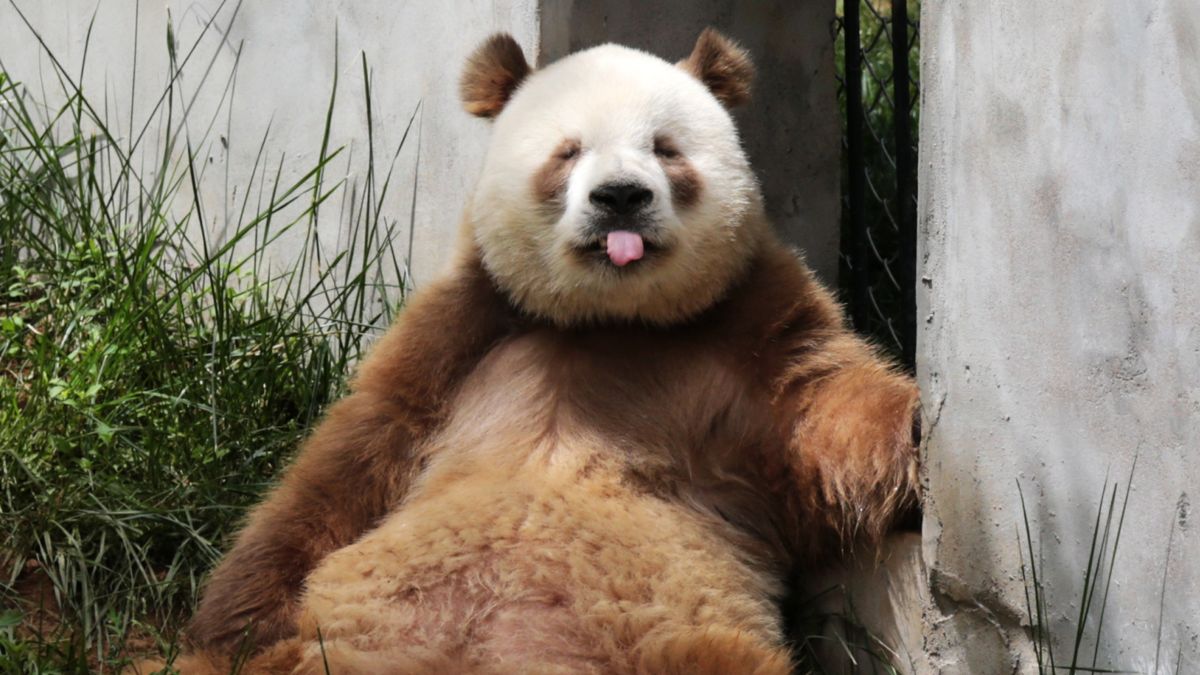Name: Qinling panda (Ailuropoda melanoleuca qinlingensis)
Where it lives: Qinling Mountains in the Shaanxi province, China
What it eats: Bamboo
Why it’s awesome: When we think of pandas, we tend to picture the famous bears in monochrome — but not all pandas are so black and white.
A subspecies of giant pandas called Qinling pandas can sometimes be a mix of dark and light brown. These brown pandas are so rare, only a dozen or so have ever been documented.
The first officially recorded brown Qinling panda — a female named Dandan — was found in 1985 in Foping County in Shaanxi province by a local ranger and taken to Qinling Wildlife Zoo. She remained in captivity until her death in 2000.
Qinling pandas were officially recognized as a subspecies in 2005. Their habitat, diet and behavior are very similar to giant pandas. However, Qinling pandas are slightly smaller. They also have brown eye spots underneath their eyes, whereas giant pandas have patches around their eyes.
Research suggests Qinling pandas may have genetically separated from giant pandas from the Sichuan region around 300,000 years ago. And while most Qinling pandas are black and white, scientists were baffled as to why some of the subspecies have brown fur.
Related: World’s oldest male panda dies at 35 after weeks of ‘deteriorating health’
But in 2024, scientists published a study in PNAS revealing brown Qinling pandas exist thanks to a genetic quirk.
The team sequenced the genome of a captive brown panda known as Qi Zai, who was captured in the wild in 2009 and taken to Foping Nature Reserve in Shaanxi, along with his mother. In total, they sequenced the genomes of 35 giant pandas, including two brown ones.
They discovered that brown pandas get their unusual coloring because of a missing sequence in their DNA. Specifically, Qinling pandas have a mutation in a gene called Bace2, which is related to pigmentation. Further tests on another 192 black-and-white pandas showed none had this version of Bace2.
Interestingly, although Qi Zai is brown, his mother is black and white. The researchers believe this is because Qinling pandas have a dominant gene for black-and-white coloration and a recessive gene for brown-and-light-brown colors. For a brown Qinling panda to be born, both parents — who can be black-and-white — must carry the recessive “brown” gene.
However, there is a very low probability that both parents will have the recessive gene for brown-and-light-brown coloration, which is why brown Qinling pandas are so rare.
Additionally, the scientists analyzed preserved tissue from Dandan and concluded she had the same recessive trait as Qi Zai. The missing sequence represented a major breakthrough in genetics, as it was the first time that an absent genetic segment has been linked to a change in color.
Qinling pandas’ brown fur is likely the result of inbreeding. The population lives exclusively in the mountainous region the subspecies is named after and is genetically isolated, which has enabled the brown color variation to persist.


